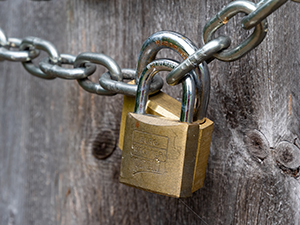 In today's data-driven age, the protection of sensitive information is paramount, particularly in the healthcare sector where patient privacy and data security are of the utmost importance. The Health Insurance Portability and Accountability Act (HIPAA) plays a pivotal role in ensuring the confidentiality, integrity, and availability of patient data. Let's dive into the world of HIPAA compliance to understand its significance and how it shapes the healthcare landscape.
In today's data-driven age, the protection of sensitive information is paramount, particularly in the healthcare sector where patient privacy and data security are of the utmost importance. The Health Insurance Portability and Accountability Act (HIPAA) plays a pivotal role in ensuring the confidentiality, integrity, and availability of patient data. Let's dive into the world of HIPAA compliance to understand its significance and how it shapes the healthcare landscape.
Understanding HIPAA:
HIPAA, enacted in 1996, was designed to establish standards for safeguarding patient health information. Its primary goals are to enhance the efficiency of healthcare transactions, improve portability of health insurance, and ensure the security and privacy of patient data.
The Components of HIPAA Compliance:
- Privacy Rule: This rule governs the protection of patient information by limiting its use and disclosure. It grants patients greater control over their health data and outlines conditions under which healthcare providers can share information.
- Security Rule: The Security Rule focuses on the technical and administrative safeguards necessary to protect electronic health information. It mandates measures such as access controls, encryption, and risk assessments to ensure data security.
- Breach Notification Rule: This rule requires healthcare entities to notify affected individuals and regulatory authorities in the event of a data breach involving unsecured health information.
- Enforcement: HIPAA enforcement is overseen by the Office for Civil Rights (OCR), which has the authority to conduct audits, investigate complaints, and impose penalties for non-compliance.
The Importance of HIPAA Compliance:
- Patient Trust: HIPAA compliance fosters patient trust by assuring individuals that their sensitive health data will remain confidential.
- Legal Requirements: Non-compliance can lead to significant financial penalties and damage to an organization's reputation.
- Data Security: Compliance measures help healthcare providers mitigate data breaches and cyber threats, safeguarding patient records from unauthorized access.
Steps to Achieve HIPAA Compliance:
- Risk Assessment: Identify potential vulnerabilities and threats to patient data within your organization.
- Policies and Procedures: Develop clear policies and procedures that guide the handling of patient information, both electronically and on paper.
- Employee Training: Regularly train staff members on HIPAA regulations and best practices for data security.
- Access Controls: Implement strict access controls to ensure only authorized personnel can access patient records.
- Encryption: Encrypt sensitive patient data during transmission and storage to prevent unauthorized access.
Conclusion:
HIPAA compliance is not only a legal requirement but also a critical step toward building patient trust and ensuring the security of healthcare data. By adhering to the regulations outlined in HIPAA, healthcare organizations can protect their patients' privacy, maintain their reputation, and contribute to the overall advancement of the healthcare industry.
In a world where data breaches are a constant threat, HIPAA compliance stands as a beacon of assurance for patients and healthcare providers alike, paving the way for a secure and trustworthy healthcare ecosystem.
Get started with Leapfrog today! Click here to book a Discovery Call or give us a call at (312) 675-8100 or (615) 592-0060 to speak with our team immediately.

 Contact Us At
Contact Us At


